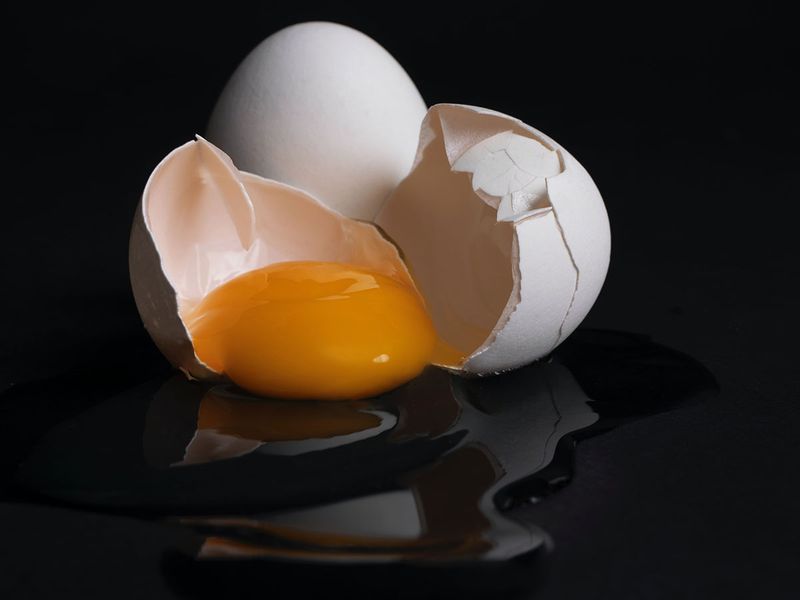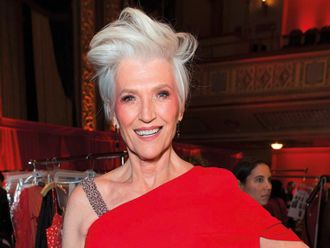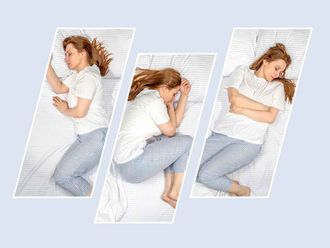
Highlights
- Vaccine lots produced by existing egg-based flu virus vaccine makers in Brazil, Thailand and Vietnam exhibited "excellent immunogenicity and efficacy" in lab experiments.
- The NDV-HXP-S vaccine uses harmless Newcastle disease virus as ‘vector’.
- Early trials of easier-to-produce COVID-19 vaccine shows "promise".
A NEW vaccine using a Newcastle virus as “vector” could lead to the production of inexpensive COVID shots made using chicken eggs, researchers said.
By having the vaccines manufactured in existing facilities used to manufacture flu shots, the new technique could potentially boost supply and greater access to safe, effective vaccines by poor countries, they added.
The vaccine is called the NDV-HXP-S, developed by a multinational team led by researchers at Icahn School of Medicine at Mount Sinai in New York City. More specifically, it is known as “Recombinant Newcastle disease virus expressing SARS-CoV-2 spike protein”.
What we know so far:
What makes this vaccine different?
There are two key differences and potential advantages: they’re easier to produce, and also cheaper to produce, the scientists claimed.
And no need for super-cooling which is required for mRNA based vaccines. Researchers behind the NDV-HXP-S shot said the technique means it can be produced “locally” in various low- and middle-income countries — from Brazil, to Vietnam and Thailand.
Vaccine lots produced by existing egg-based influenza virus vaccine manufacturers in these three countries exhibited "excellent immunogenicity and efficacy" in lab tests. This, researchers claim, demonstrates that NDV-HXP-S vaccines can be quickly produced at large-scale to meet global demands.
What is it based on?
The vaccine uses an engineered version of the harmless "Newcastle disease” virus studded with coronavirus spike proteins to train the immune system to recognise and attack the virus that causes COVID.
Researchers said this means the vaccine can be manufactured at high yields in “embryonated” chicken eggs. Embryonated chicken eggs refers to fertilised chicken eggs, in which vaccines for diseases such as influenza are currently produced. The new technique could pave the way for the manufacture of COVID vaccines in chicken eggs at low cost at influenza vaccine manufacturing plants around the world, the research team said.

How many versions of the vaccine are being developed?
There are two known preparations — or platforms: “live” (attenuated) and “killed” (inactivated) vaccines.
- “Live” (attenuated) vaccines
- “Killed” (inactivated) vaccines.
Where are the trials being conducted?
Early clinical trials with a “live-virus” (attenuated) version are underway in Mexico and the United States.
A killed-virus (“inactivated”) version is being tested in Vietnam, Thailand and Brazil, according to the researchers.
In humans, however, NDV causes only mild flu-like symptoms or conjunctivitis (an infection of the eye that is also called pink eye) and/or laryngitis (an irritation and swelling of the voice box and the area around it).
Is the vaccine effective?
Researchers say the NDV-HXP-S vaccine is yielding promising results in initial clinical trials. Based on comparative blood antibody “titre” count, the researchers found that NDV-HXP-S induces more antibodies that can neutralise the virus and fewer non-neutralising antibodies than the current mRNA vaccines from either Moderna or Pfizer/BioNTech.
The antibody measurements were based on blood samples from trial participants, the team reported to the pre-print server medRxiv on Friday (January 28, 2022), ahead of a peer-review.
“The NDV-HXP-S vaccine induced neutralising antibody responses against wild type (the original) SARS-CoV-2 that matched what we see after mRNA vaccination, but the proportion of neutralising antibodies in the response was higher for NDV-HXP-S,” said Prof Florian Krammer, one of the inventors.
Prof. Krammer, who works at the Department of Microbiology at the Icahn School of Medicine at Mount Sinai, New York, explained the trial results are follows:
- (a) Neutralising titres induced by NDV-HXP-S are as high against “wild” type SARS-CoV-2 as for the BNT162b2 (Pfizer) vaccine.
- (b) NDV-HXP-S induces a higher proportion of neutralising antibodies.
“This seems to be driven by an RBD-focused immune response with little antibody to S2,” he stated in a recent tweet.
What do lab experiments show?
For one, lab work shows that the an “upgraded” Newcastle disease virus (NDV) vector — or carrier — expressing an optimised spike antigen (NDV-HXP-S) is a “versatile vaccine”.
This means not only can it be used either as “live” or “inactivated” platform to induce strong antibody responses, but also shows it is able to “cross-neutralise” variants of concern. This is an important development given the ability of SARS-CoV-2 to rapidly mutate.
Animal models show the the immunity conferred by NDV-HXP-S effectively counteracts SARS-CoV-2 infection in mice and hamsters.
A dose-ranging study in mice indicated the inactivated NDV-HXP-S was highly “immunogenic” (producing an immune response) — even at a dose as low as 0.01 µg (micrograms) of the total protein — which means the amount of the spike protein would be much less.
How is “cross-neutralisation” against other variants achieved?
The researchers claim the use of an “adjuvant” (known as CpG 1018, which boosts the efficacy of vaccines) leads to an antigen-sparing effect.
While they believe the NDV could be self-adjuvanting due to viral components (RNA and proteins) being present, they also observed that CpG 1018 drove a more prominent immunoglobulin 2a (IgG2a) production over immunoglobulin 1 (IgG1) than the unadjuvanted vaccine in mice, suggesting it could promote a favourable response.
Moreover, lab experiments show that an oil-in-water nano-emulsion adjuvant (known as "AddaVax") also enhanced antibody titres.
“It was observed that mice and hamsters vaccinated with NDV-HXP-S developed strong antibody responses that not only neutralised the prototype SARS-CoV-2 but also cross-neutralised variants of interest/concern,” the team reported.
How safe is this vaccine?
Researchers said the “live” version for humans will be propagated in specific pathogen-free (SPF) embryonated eggs. On the other hand, the “inactivated” vaccine for humans can be safely manufactured in non-SPF eggs.
The process of “inactivation” (killing) of the virus eliminates the risk of disease-causing agents arising from the use of widely-available breeder chicken eggs that are one-tenth the cost and not limited in supply, they added.
Who are the people behind it?
The research team include Prof Florian Krammer and Fatima Amanat of the Icahn School of Medicineat Mount Sinai, New York; Ricardo Das Neves Oliveira of Instituto Butantan, São Paulo, Brazil and Duong Huu Thai of the Institute of Vaccines and Medical Biologicals, Nha Trang City, Khanh Hoa Province, Vietnam.
What about trial clinical (human) trials?
Mid-stage trials (Phase 2) of the inactivated vaccine have been completed. The final-stage (Phase 3) randomised trials are being planned.
Why is it significant?
When clinical trials reflect the lab results, it would mean the following:
- (a) COVID vaccines can be manufactured like flu shots which are already being produced widely in manufacturing plants around the world at low cost in chicken eggs.
- (b) The development and production of inexpensive COVID vaccines in different parts of the world could potentially boost supply and lead to a more equitable allocation of vaccines.
These two factors could greatly enhance the fight to limit the global impact of the pandemic and the emergence of additional variants of concern, said researchers.
COVID vaccines that are inexpensive, safe and effective are still the need of the hour. Viruses tend to continue to evolve until they run out of hosts to infect.
In many vaccine-deprived countries the pandemic still poses a major health risk. Globally, billions remain unvaccinated against COVID, which means Omicron is not the end.
"Competing interest” statement of vaccine developers
According to the study’s declaration, the Icahn School of Medicine at Mount Sinai has filed a patent application for the vaccine and names Peter Palese, Florian Krammer, Weina Sun, and Adolfo García-Sastre (AG-S) as inventors. "The AG-S laboratory has received research support from Pfizer, Senhwa Biosciences, Kenall Manufacturing, Avimex, Johnson & Johnson, Dynavax, 7Hills Pharma, Pharmamar, ImmunityBio, Accurius, Merck and Nanocomposix. Also, AG-S has consulting agreements for the following companies involving cash and/or stock: Vivaldi Biosciences, Contrafect, 7Hills Pharma, Avimex, Vaxalto, Pagoda, Accurius, Esperovax, Farmak, Applied Biological Laboratories and Pfizer."









